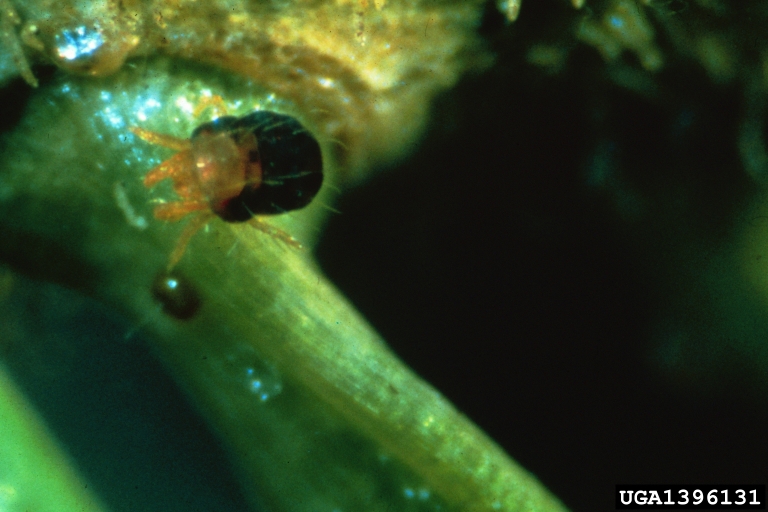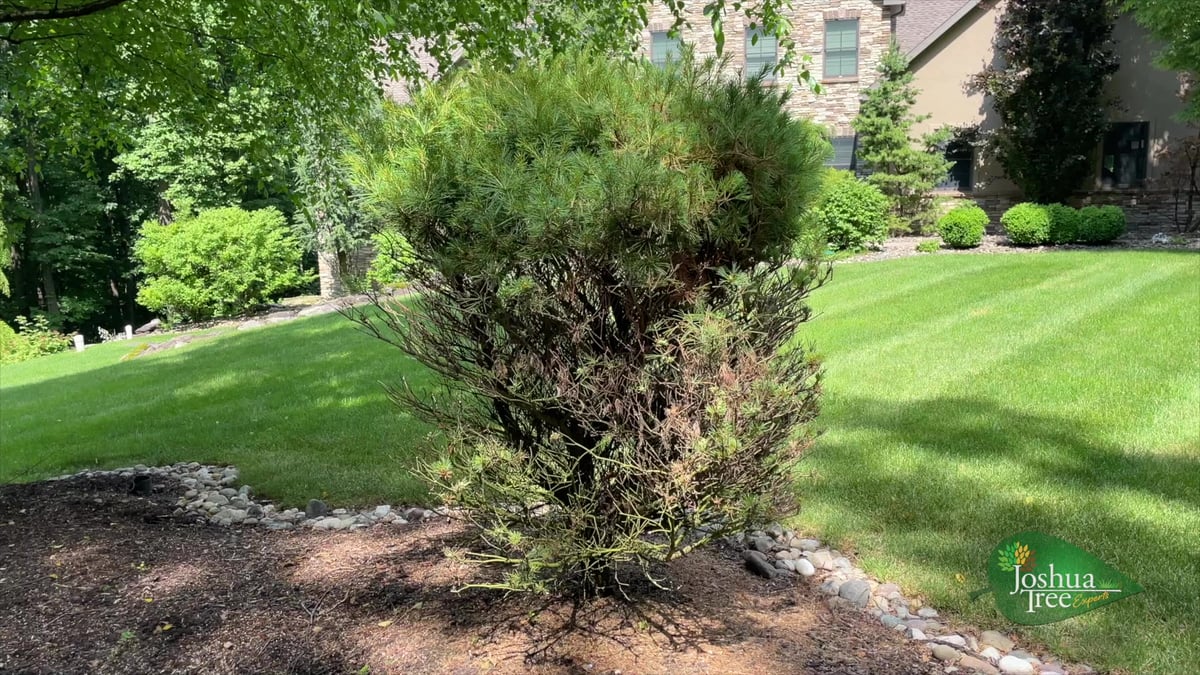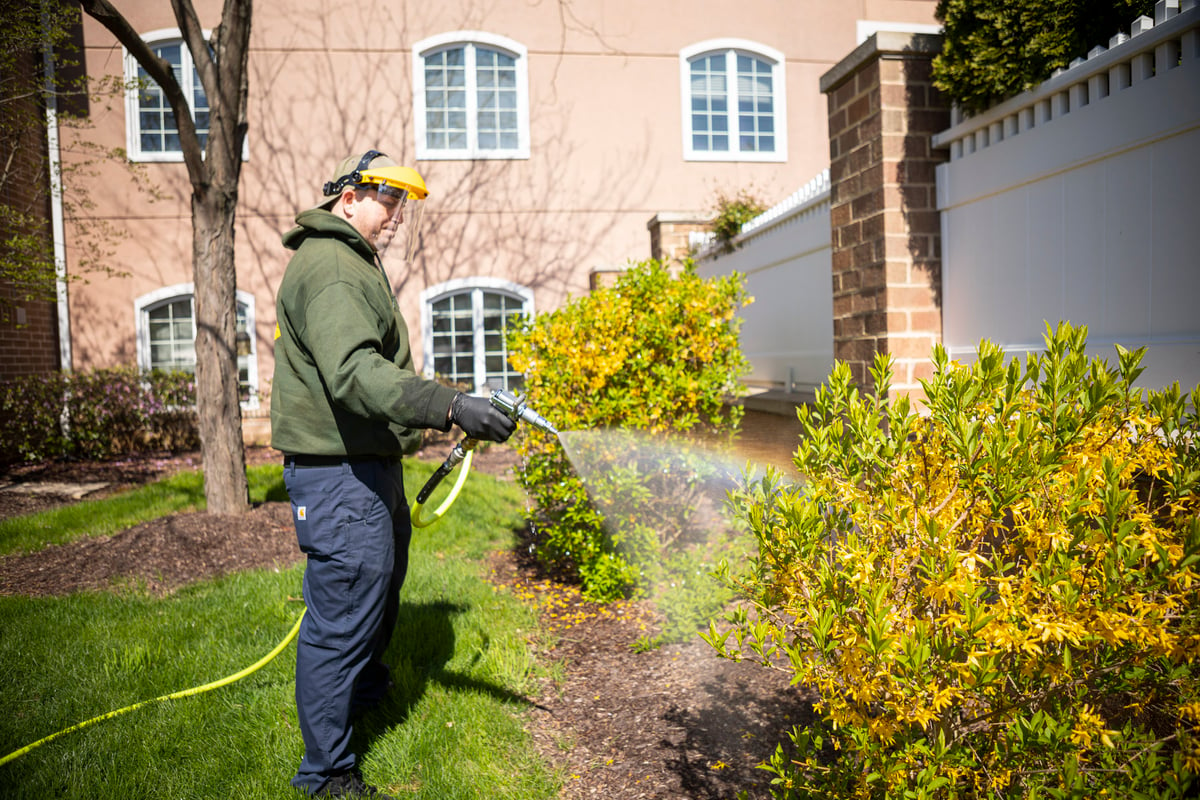If you like a good underdog story, then you know that size is no measure of success. We all know the outcome of David & Goliath after all! And the same might be true of spider mites versus the plants in your landscape. The spider mite is teeny-tiny…but they can do some mega damage.
Though you may never even see them (they’re that small!) they can cause significant problems for your shrubs, trees, and flowering plants.
Since these highly destructive pests can be a major problem, it’s important that you take proper action.
We’re answering some of the most common questions about spider mites so that you can fight back against these little menaces.
#1: What do spider mites look like on plants?
Because spider mites are so tiny (an adult averages 1/50th of an inch), you’re probably not going to notice significant details on them. But under a magnifying glass, you would see that spider mites can come in a variety of colors and patterns.
Spider mites are not actually insects but are more closely related to the spider family. These arachnids have eight legs and an oval body.

But what you’ll probably see moving around on your plants are some dots (black, yellow, red, or brown).
Or, you might simply notice the damage that they’ve done, which we’ll cover next.
The power of the spider mite lies in its numbers. While a few spider mites aren’t going to do any harm, this pest multiplies rapidly. A female may only have an average lifespan of 30 days but during that time can produce 100 eggs. Just a few spider mites can quickly become an infestation.
#2: What damage can spider mites on plants cause?
You might notice a number of signs that spider mites are attacking your plants. Typically, spider mite damage appears as tiny spots on your plant’s foliage. This occurs when the spider mites use their piercing-sucking mouthparts to feed on sap.
As the feeding intensifies, you might also notice that plants look bronzed or bleached and may start to drop their leaves.
Spider mites can also leave behind webbing.

Eventually, severely affected plants can wither and die.
Some of the plants that are commonly infected by spider mites include Juniper, Arborvitae, Pine, Douglas-Fir, Spruce, and Boxwood…though there are many other plants that they’ll also attack. There are many different species of spider mites and some tend to prefer certain plant types over others.
#3: How to get rid of spider mites on plants?
Treating spider mites on plants means using highly specific miticides. These spider mite-specific treatments have come a long way because they target just the pests that you want to target while not harming others.

This is critical because there are both harmful and beneficial mites on your trees and shrubs. Since the beneficial mites actually feed on the harmful ones, you want to leave them be.
This is why it’s so important that the treatment for spider mites on plants uses these highly selective products that will not harm predatory mites.
#4: How to prevent spider mites in the future?
It’s not uncommon for homeowners to notice spider mites on plants after significant damage has already been done. Since these pests are so small, they can really go unnoticed for a long time.
We know it’s frustrating that damage might be occurring right under your nose. But this is why one of the best things that you can do for your landscape is incorporate preventative care in the form of Plant Health Care.
After all, while spider mites are a big problem, they are just one of many. There are numerous insects in the landscape that might be harming your trees, shrubs, and flowering plants.
But for many pests, there are preventative treatments that can be performed.
In fact, Plant Health Care can cover disease and environmental stressors, as well. While it’s not a “cure-all” solution or a magic bullet, it will set your landscape up for success by helping to strengthen your plants so that they can withstand certain trouble.
The healthier your plants are, the less likely they’ll succumb to problems.
Protecting the Beloved Plants in Your Landscape
Hopefully, these questions and answers have helped you to have a better understanding of spider mites on plants. But even more importantly, we hope that you can prevent some of these problems by investing in Plant Health Care.
The spider mite is a formidable foe…it’s often been called one of the most destructive pests in the landscape.
But that doesn’t mean it has to win.
By choosing a landscape company that offers Plant Health Care, you can address current problems and prevent future ones with a proactive treatment plan.
At Joshua Tree, we can help set homeowners up for success by getting them on a Plant Health Care program. It’s all about gaining peace of mind that your property is in good hands.
With the right approach to pest control, you’ll gain valuable peace of mind. If you’re interested in having your home inspected for potential pest issues, contact us for a free quote or give us a call at 833-JTE-TREE.
Image Source: Spider Mite



